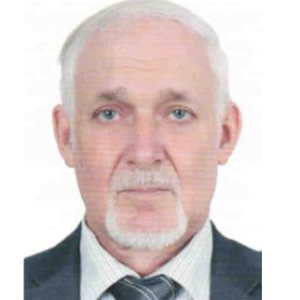Title : Design of nanocomposite materials for active components of structured catalysts for biofuels transformation into syngas, catalytic layers of membrane reactors with oxygen/hydrogen separation and anodes of solid oxide fuels cells operating in the internal reforming mode
Abstract:
Approaches to design, characterization and testing nanocomposite materials for oxygen and hydrogen separation membranes, solid oxide fuel cells and structured catalysts for natural gas and biofuels transformation into syngas are presented. These materials are comprised of mixed ionic-electronic conducting complex oxides nanoparticles (with perovskite, spinel, fluorite and Ruddlesden-Popper type structures), ionic conductors (doped ceria, zirconia etc. as oxide-ion conductors; tungstates, molybdates and scandates of lanthanoids etc. as protonic conductors), electronic conductors (nanoparticles of Ni-based alloys, including those exsolved from complex oxides) and their nanocomposites, either bulk or supported on mesoporous doped MgAl2O4 spinel. They were sintered by variety of methods including e-beam sintering using an ILU-6 accelerator. Metal substrates for structured catalysts were covered by protective La2Zr2O7 - LaAlO3 layers sintered by e-beam. Nanocomposite catalytic layers were supported on metal substrates, membranes and metal foam supported fuel cell anode half-cells from suspensions, and after drying were sintered by e-beams. The real/atomic structure of nanomaterials was characterized by combination of modern structural and spectral methods, while oxygen/hydrogen mobility and surface reactivity were studied by isotope heteroexchange in the temperature- programmed mode. Co-existence of several channels of oxygen migration in these systems with diffusion coefficients differing by several orders of magnitude was demonstrated with fast channels corresponding to interfaces in nanocomposites, grain boundaries in complex oxides enriched by some cations as well as to cooperative mechanism of oxygen migration in oxides with asymmetric structures such as Ruddlesden-Popper one (Ln2MeO4), etc. Using e-beam sintering of supported layers allowed to decrease processing temperature, reduce internal thermal stresses and increase nanocomposite active component dispersion and metal-support interaction, thus helping to increase activity and coking/thermal shock stability. Materials optimized by the chemical composition, nanodomain structure and sintering conditions demonstrated a high and stable performance as SOFC anodes in the methane internal reforming mode with power density close to that obtained in the case of using hydrogen as fuel. Catalytic reactors with asymmetric oxygen or hydrogen separation membranes supported on metal foam substrates and covered by catalytic layers from the fuel side were successfully used for transformation of biofuels into syngas by oxygen transferred from the air side as well as for hydrogen extraction from syngas obtained by fuels reforming. Very high oxygen fluxes (up to 15 cm3 O2/cm2min) and hydrogen fluxes (up to 3.5 cm3 H2 /cm2 min) were obtained in these reactors promising for the practical application. Optimized active components of catalysts demonstrated a good compatibility with all substrates as well as a high catalytic activity in fuels reforming (with syngas yield approaching equilibrium values at short contact times) and stability to coking. Mathematical modeling of processes in catalytic and membrane reactors was carried out using modern programs (COMSOL Multiphysics, CFD), stage-like schemes of catalytic reactions and mass transfer equations, which allowed to describe operation parameters required for modeling.
Support by the Russian Science Foundation grant 23-73-00045 is gratefully acknowledged.
Audience Take Away Notes:
- The audience will be able to use this information in going from atomic-scale features of the catalysts structure to pilot-scale testing of structured catalysts performance in biofuels reforming.
- This provides a practical solution to problem of the efficient transformation of biofuels into syngas and hydrogen required by the concept of green energy.
- It will provide new information to assist in design of energy-efficient catalytic membrane reactors for biofuels reforming
- It will help in in design of efficient solid oxide fuel cells operating in the internal reforming mode.



